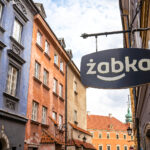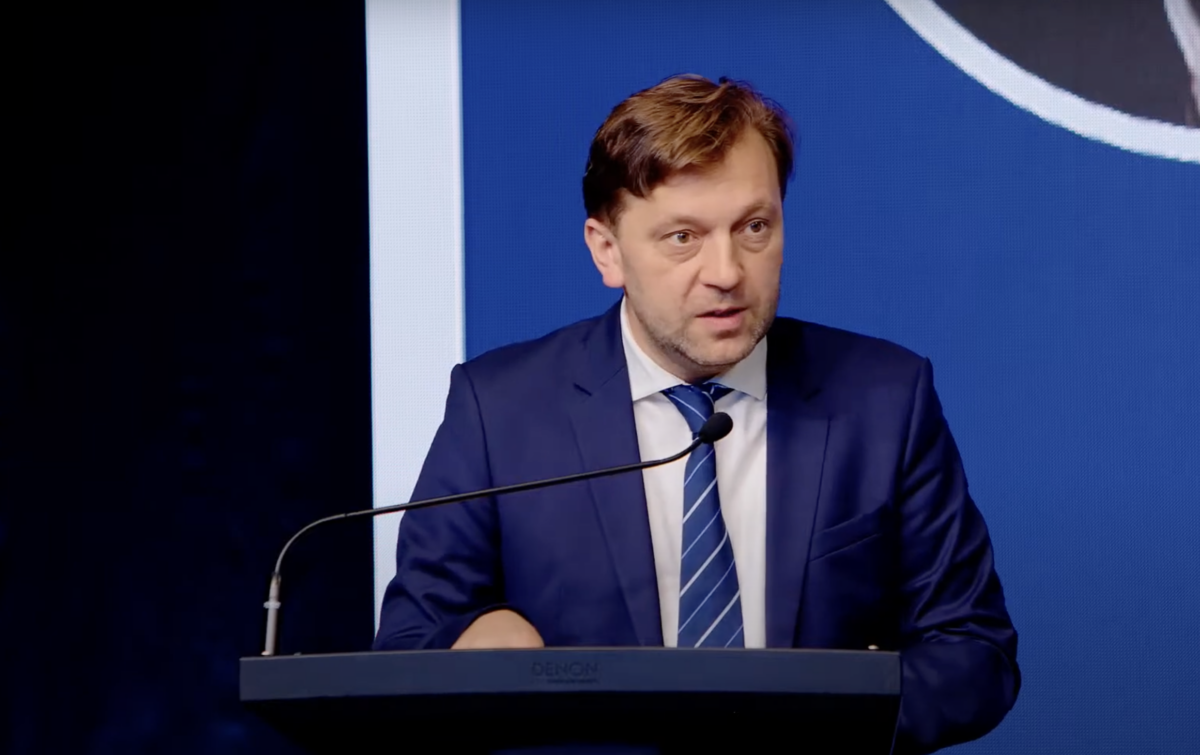Sometimes, just a short phrase from a government minister can change perceptions about how a country is perceived. For many of the delegates at Moldova Business Week earlier this month, that phrase came from the Moldovan Minister of Digitalisation and Economic Development, Dumitru Alaiba (pictured above).
“In the 21st century there is no reason why the average citizen should have to know where the tax office is located,” he said at an event dedicated to the booming Moldovan IT sector. “Or consumer protection, or the food safety authority. Everything should be available online, ideally on your mobile phone.”
Alaiba’s (valid) point was made to drive home the progress Moldova is making in digitalising its public services. Currently, “a bit over 65 per cent” are available digitally (many in a smartphone app, EVO, launched earlier this year) and the country is heading “full speed” towards making it 100 per cent, Alaiba added.
Around 80 per cent of all interactions between entrepreneurs and the authorities now take place online, he confirmed, something that has saved Moldovan businesses around one billion lei (51.4 million euros) this year.
For Alaiba, and other leading figures in the country’s government, digitalisation is an increasingly important part of Moldova’s national brand. And together with the digital push is the development of the country’s IT sector, which now accounts for around seven per cent of GDP and employs more than 30,000 people.
“And this is not just a spike,” Alaiba added. “It’s steady growth. And what we are seeing is innovation from the IT sector spilling over into other sectors from transport to energy to agriculture. There is a place for innovation in every sector. And it is this innovation that will boost our economy and maximise the growth of GDP.”
The role of MITP
Driving much of the growth in the IT sector is Moldova’s Innovation Technology Park (MITP), Europe’s first e-park whose residents benefit from a flat tax rate of seven per cent on turnover.
Now accounting for around 80 per cent of the Moldovan IT sector and some five per cent of Moldovan exports, it’s an initiative whose success recently saw its lifespan extended until at least 2035.
MITP’s success means that in 2022 Moldova had the highest ICT services growth rates among neighbouring countries and regional competitors (Ukraine, Belarus, Romania, Estonia, Latvia and Lithuania). Good infrastructure has helped—the average internet speed in Moldova is higher than in some more developed countries (such as Germany, Switzerland or Estonia).
Foreign investors are taking note. According to the UN Trade and Development Agency (UNCTAD), FDI in Moldova is currently averaging around 500 million US dollars per year, well up from 300 million US dollars in 2018.
“I think the word about Moldova and its IT sector is getting out,” says Ali Ezzatyar, deputy mission director at USAID in Chișinău.
“It’s beginning to be known in the greater region. MITP has received well-deserved coverage and recognition from Forbes, from AP, and MITP itself [with Emerging Europe] has produced an IT Investment Guide for Moldova. These are signals to investors that Moldova is safe, prosperous, and a place where you can depend on the IT products that are here.”
Indeed, while Moldova is facing unprecedented challenges due to the spillover effects of Russia’s invasion of Ukraine, the country is, Prime Minister Dorin Recean points out, “a safe zone”.
“It’s also resilient,” the prime minister added during Moldova Business Week. Overall economic growth rebounded from the shock of 2022 to a modest 0.7 per cent in 2023, and, according to the World Bank, is expected to grow a further 2.2 per cent.
“The service sector, especially IT, transport, and public services, is expected to drive growth,” the Bank says.
Towards the EU
Economic reforms aligned with EU accession, along with fiscal measures and favourable interest rates, will likely bolster medium-term growth, making the country’s presidential election next month, and a concurrent referendum on EU membership, crucial to the country’s future wellbeing.
Moldova formally applied to join the EU just weeks after Russia launched its full-scale invasion of Ukraine in February 2022, and began accession negotiations (along with Ukraine) in June.
With campaigning for both the presidential election and referendum now underway, the incumbent pro-EU and pro-business president, Maia Sandu, looks well placed to secure a second term in office, while her gamble of calling for a referendum on the country’s future direction looks set to pay off: the latest opinion polls suggest that two-thirds of Moldovans are likely to vote for the country to maintain its course towards EU membership.
When membership might be achieved is a moot point. A few people at Moldova Business Week suggested that 2030 might be realistic. More objective analysis might suggest a slightly longer timeframe.
What’s certain however is that those who attended Moldova Business Week would have left with the impression that the country’s digital public services (which put those on offer in neighbouring Romania to shame), its drive to continue and speed-up the digital transformation of all sectors of its economy, and its commitment to innovation will make it, when it eventually joins, an asset for the EU.







